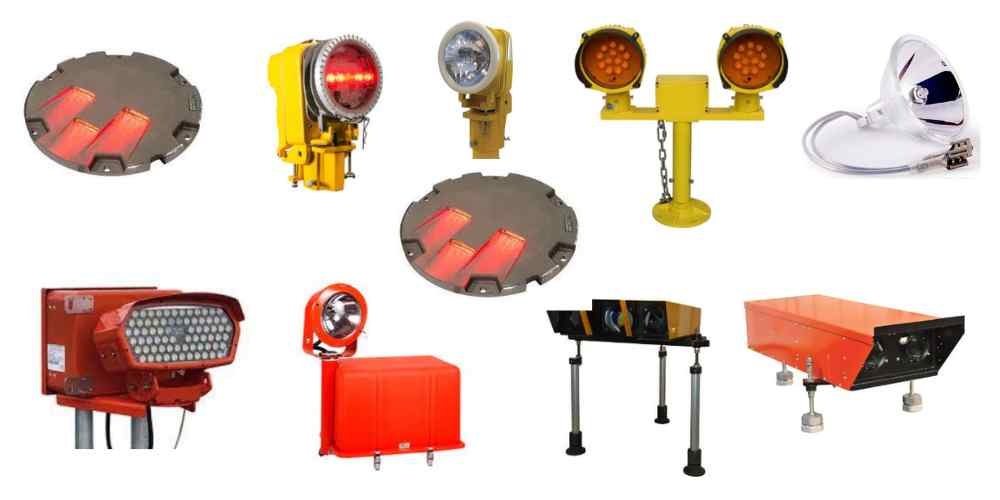Airfield Ground Lighting Runway and Taxiway in China
Welcome to our comprehensive guide to the latest developments in airfield ground lighting (AGL) systems for runways and taxiways in China. As aviation technology continues to evolve, so too does the infrastructure supporting safe and efficient operations at airports around the world. In this article, we will delve into various aspects of AGL systems, from design and installation to compliance testing and maintenance. So fasten your seatbelt and prepare for takeoff as we shed light on the illumination solutions illuminating China’s skies in 2024.

The Evolution of AGL Systems
LED Runway Lighting: Brightening China’s Skies
In recent years, LED technology has revolutionized runway lighting, offering numerous benefits over traditional incandescent and halogen lights. LED runway lights provide exceptional brightness, energy efficiency, and durability, making them an ideal choice for airports seeking to enhance safety and reduce operational costs. With China’s commitment to modernizing its aviation infrastructure, LED runway lighting has become increasingly prevalent across the country’s airports.
In-Pavement Runway Lights: Guiding Pilots with Precision
In-pavement runway lights play a crucial role in providing visual guidance to pilots during takeoff, landing, and taxiing maneuvers. These lights are embedded directly into the runway surface, illuminating the path for aircraft regardless of weather conditions or time of day. In China, advancements in in-pavement lighting technology have improved visibility and safety, ensuring smooth operations even in low-light environments.
Taxiway Edge Lights: Illuminating the Path to Safety
Taxiway edge lights help pilots navigate the complex network of taxiways and aprons at airports. In China, these lights are strategically positioned along taxiway edges, providing clear delineation and enhancing situational awareness for flight crews. With the implementation of energy-efficient LED technology, taxiway edge lights contribute to the overall sustainability of airport operations in China.
Enhancing Safety and Compliance
ICAO Compliance: Meeting International Standards
The International Civil Aviation Organization (ICAO) sets forth standards and recommended practices for airfield lighting to ensure consistency and safety across global aviation networks. In China, adherence to ICAO Annex 14 Aerodromes guidelines is paramount, guiding the design, installation, and operation of AGL systems to meet rigorous safety standards.
FAA Compliance Testing: Ensuring Reliability and Performance
In addition to international standards, airports in China must also comply with regulations set forth by the Federal Aviation Administration (FAA) for airfield lighting systems. FAA compliance testing involves rigorous inspections and performance evaluations to verify the reliability and effectiveness of AGL installations, further bolstering safety and operational efficiency.
Embracing Innovation and Sustainability
Solar-Powered AGL Systems: Harnessing Renewable Energy
As part of China’s commitment to sustainability, many airports are implementing solar-powered AGL systems to reduce their environmental footprint and reliance on traditional power sources. By harnessing the power of the sun, these systems provide reliable illumination while minimizing carbon emissions and operating costs, contributing to a greener aviation industry.
Pilot-Controlled Lighting: Empowering Flight Crews
Pilot-controlled lighting systems allow flight crews to activate runway and taxiway lights as needed, providing flexibility and control during nighttime or low-visibility conditions. In China, the adoption of pilot-controlled lighting enhances operational efficiency and safety, empowering pilots to tailor lighting conditions to their specific requirements.
The Future of AGL in China
As China continues to invest in airport modernization and infrastructure development, the future of AGL systems looks promising. With advancements in LED technology, sustainable energy solutions, and compliance testing protocols, airports across China are poised to enhance safety, efficiency, and sustainability for years to come. Whether it’s upgrading existing installations or implementing new technologies, the evolution of AGL systems in China reflects the nation’s commitment to excellence in aviation.
In conclusion, airfield ground lighting plays a critical role in ensuring safe and efficient operations at airports in China and around the world. From LED runway lights to solar-powered AGL systems, advancements in technology are transforming the way airports illuminate their runways and taxiways. By embracing innovation, sustainability, and international standards, China is paving the way for a brighter future in aviation infrastructure. So the next time you look up at the night sky and see the runway lights shining bright, remember the dedication and ingenuity behind China’s AGL systems in 2024.
FAQs
What are the benefits of LED runway lighting in China?
LED runway lighting in China offers enhanced brightness, energy efficiency, and durability, improving visibility and reducing operational costs for airports across the country.
How do taxiway edge lights contribute to safety in Chinese airports?
Taxiway edge lights in Chinese airports provide clear delineation, aiding pilots in navigating taxiways and aprons, especially during low-light conditions, enhancing overall safety and situational awareness.
Are solar-powered AGL systems widely used in China?
Yes, solar-powered AGL systems are increasingly prevalent in China, harnessing renewable energy sources to illuminate runways and taxiways, reducing environmental impact and operating costs while maintaining reliability and performance.